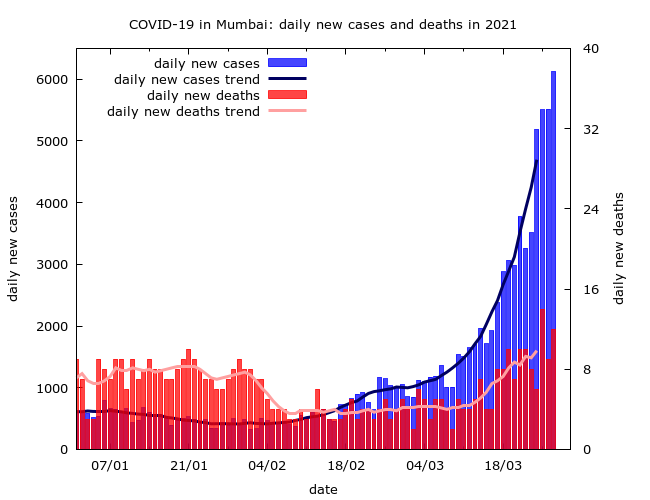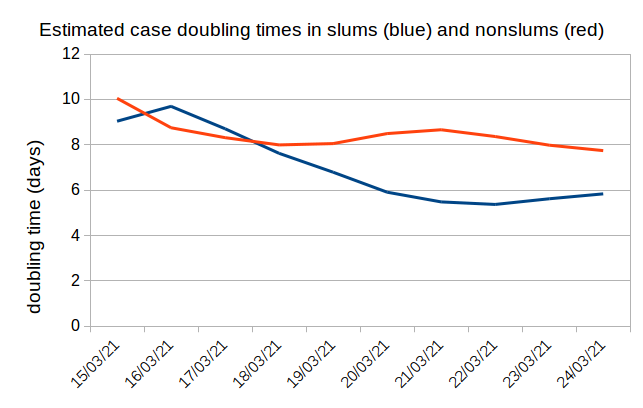
#COVID19 in Punjab. Are we seeing effects of widespread circulation of the more lethal "U.K. variant" (B.1.1.7) in Punjab? (thehindu.com/news/national/…).
Yes, I think so. Apparently this variant could be ~64% more deadly (medicalnewstoday.com/articles/covid…).
#thread (1/6)
Yes, I think so. Apparently this variant could be ~64% more deadly (medicalnewstoday.com/articles/covid…).
#thread (1/6)
Fatalities in Punjab seem to lag cases by about 17 days - that's something of an educated guess since there's a lot of noise in the data. Here's the 17-day delayed CFR in Punjab since the start of the year. It is an astonishing picture. What does it show? (2/6) 

Through January the delayed CFR hovered between 2 and 3. Since late April it's hovered around 5. A *very clear* change. This could be the effect of increased circulation of the more lethal variant. An alternative explanation also needs to be looked at... (3/6)
As infections started to surge, we expect testing to struggle to keep up, so a smaller % of infections get detected. This could drive up CFR. Punjab's test positivity has been rising since mid-Feb. I don't think this explains the changes in fatality rate. (4/6) 

Both graphs together:
1) CFR had reached a high point by early March; but 17 days earlier test positivity had hardly changed - there was not yet any clear sign of weakening detection.
2) CFR has been steady through March although TPR has continued to rise.
(5/6)
1) CFR had reached a high point by early March; but 17 days earlier test positivity had hardly changed - there was not yet any clear sign of weakening detection.
2) CFR has been steady through March although TPR has continued to rise.
(5/6)

In summary: it seems possible the more transmissible and more deadly UK variant (B.1.1.7) was becoming increasingly prevalent in Punjab through late Jan and Feb. This seems to have resulted in an increase in fatality rate through Feb. It has stabilised in March. (6/6)
• • •
Missing some Tweet in this thread? You can try to
force a refresh









